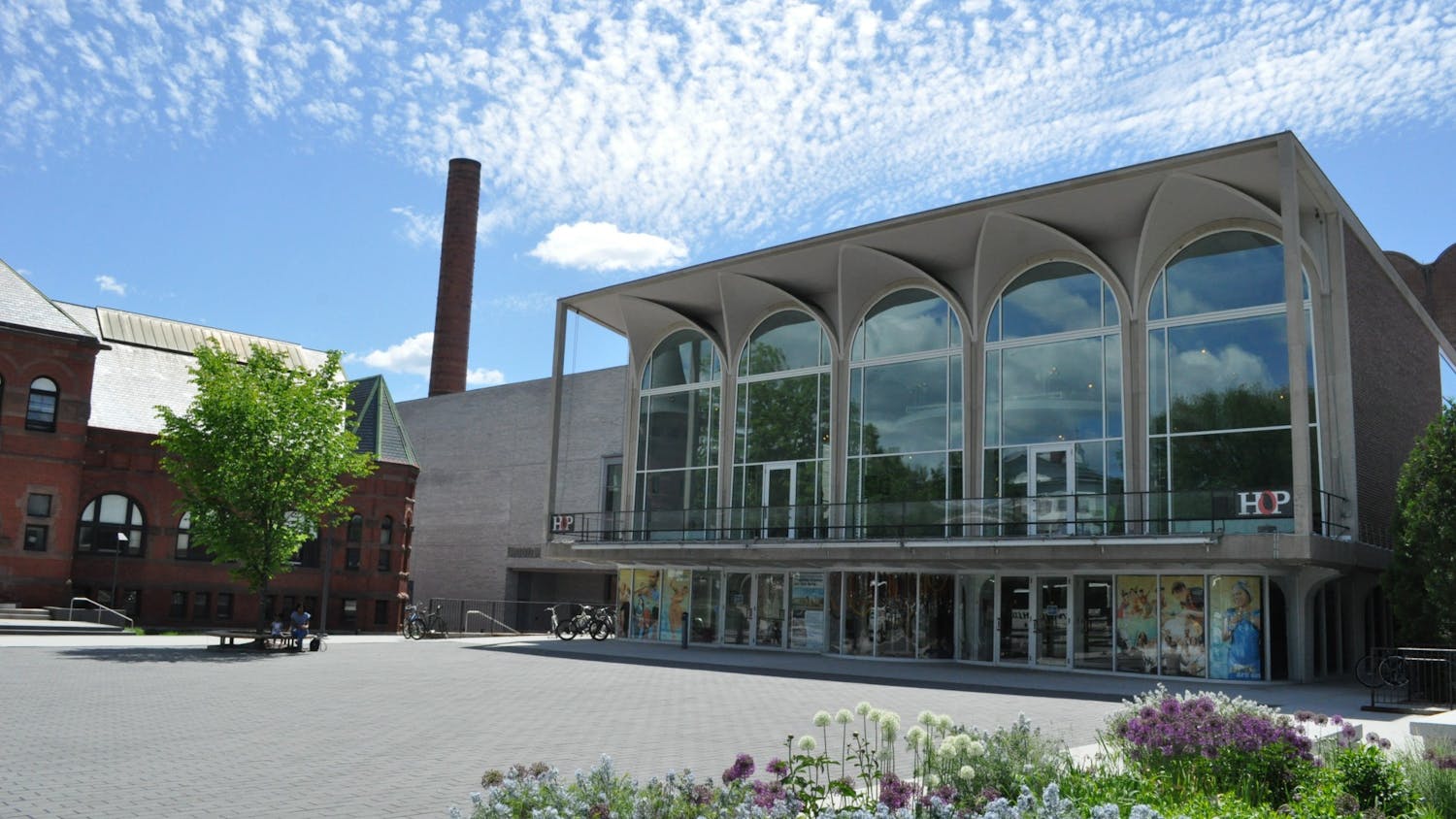This winter, moviegoers can rinse their eyes of mainstream cinema with the EYEWASH film series, a unique film experience that film curator and film and media studies professor Jodie Mack likens to the cinematic version of attending a live concert. The series, created by Mack, brings four experimental film artists and curators to present or perform their works in Loew Auditorium throughout winter term.
The series is named after animator Robert Breer's short film "Eyewash" (1959), which was inspired by his experimentation with the motion of film and what the eyes can perceive when single frames of objects are shown at high speeds in film, according to Mack.
Amy Beste, a film curator from the School of Art Institute of Chicago, kicked off the series Jan. 12, by showing 10 short films associated with Chicago design firm Goldsholl Design Associates. The films in Beste's series ranged from advertisements to experimental films and included a Kleenex ad, abstract color animations and video clips from "Who's Afraid of Virginia Wolf" (1966).
Experimental film encompasses a wide variety of approaches to and techniques of creating films that veer away from traditional motion picture or documentary practices. As demonstrated in Beste's screening, artists will physically manipulate the film reel or film images during the series so they do not follow the traditional narrative.
"Experimental film is kind of like poetry." Beste said in an interview with The Dartmouth. "It can operate in this kind of layered, deep time."
Beste's work highlights the achievements of both commercial and avant-garde film, as well as other film categories. While avant-garde film is often seen as a reaction to commercialism, Beste's series displays how both genres complement each other in spite of their conflicting motives.
Dan Streible, another curator who will screen a collection of films on Feb. 2, aims to revive and preserve films in his work. He runs the Orphan Film Symposium, through which he screens recovered films, according to Streible.
"Motifs in the corpus of Orphan Films presented at the biennial Orphan Film Symposium include unexpected historical events or evidence, as well as subject matter outside of the conventional or mainstream," he said in an email to The Dartmouth. "The thing that inspires me is how much rediscovery there is to be done among the thousands of hours of films in archives."
Mack said she views EYEWASH as a way to blur the line between film studies and fine art, and she urges students to think about film in new and creative ways.
"I see my own work as a bridge between film and media and studio art," Mack said.
Mack hopes the two departments can work together and encourage students to integrate the technical and visual aspects offered by both. She described the type of film shown in the series as a homegrown process. To put it in the language of college students, Mack said, she compares these "microfilms" to microbrewed beer local, fresh and made in high-quality, low-volume batches.
Filmmaker Xander Marro, who will show her homemade film as part of the EYEWASH series on Jan. 26, combines her background as a painter and her "interest in making pictures move," she said in an interview with The Dartmouth. Experimenting with new types of film projects allows Marro to merge these interests with her fascination with experimentation.
"The idea of making experiments is something that has always informed my practice across disciplines," she said.
Marro incorporates animation, puppets and collage in her films and explores themes of spirituality and materialism, which she relates to the material quality of art. Most recently she created a set of films exploring the culture of New England and its spiritual history, going back to the Salem Witch Trials, according to Marro.
Peter Burr is the final filmmaker participating in EYEWASH and will screen his work on Feb. 23. Like the other artists in the series, he combines many approaches in his work. Burr plans to present what he calls a "metanarrative," showing past film works in a new context as part of a larger presentation, Burr said in an interview with The Dartmouth.
"It is a live performance, so the audience affects that," Burr said. "It adds this dimension of chance and excitement."
The risks and singularity of a live performance are rare in cinema, and Burr aims to give the audience that experience with "a kind of virtual world" that he will realize on screen, he said.
Burr, like the other artists, said he embraces the ability to create or recreate a place, feeling or dimension in the films he screens.
"It's kind of difficult to tell reality from imagination," he said.



